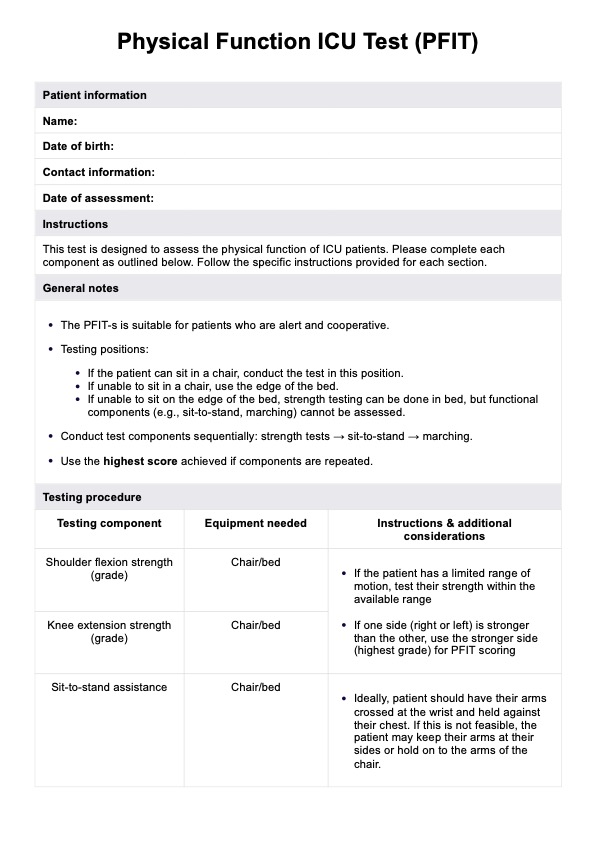The PFIT outcome measure is a standardized assessment tool used to evaluate the physical function of critically ill patients, particularly in the intensive care unit (ICU). It measures strength, endurance, and task performance, helping clinicians track recovery progress and guide rehabilitation interventions.

PFIT
Download a free PDF template and example of the Personal Fitness Improvement Tool (PFIT) to help track a patient's fitness progress and goals.
PFIT Template
Commonly asked questions
Physical function is measured through specific tests assessing strength, endurance, and mobility. These include tests like manual muscle strength assessments, sit-to-stand assistance, and step cadence, which provide objective data on a patient's functional status.
The full form of PFIT is the Physical Function ICU Test. It is designed to assess the physical function of ICU patients to aid in rehabilitation planning and discharge decisions.
EHR and practice management software
Get started for free
*No credit card required
Free
$0/usd
Unlimited clients
Telehealth
1GB of storage
Client portal text
Automated billing and online payments











